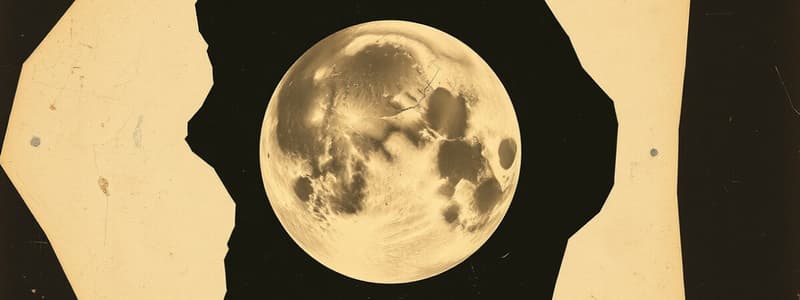Podcast
Questions and Answers
What was the primary purpose of the articles published in The New York Sun?
What was the primary purpose of the articles published in The New York Sun?
- To entertain readers with fictional stories about the moon (correct)
- To announce genuine scientific discoveries on the moon
- To provide a detailed report on a new observatory
- To promote the works of Sir John Herschel
Which fictional creature was NOT mentioned in the articles as being found on the moon?
Which fictional creature was NOT mentioned in the articles as being found on the moon?
- Two-legged beavers
- Human-like creatures
- Mermaids (correct)
- Unicorns
Who is believed to have actually written The Great Moon Hoax articles?
Who is believed to have actually written The Great Moon Hoax articles?
- Richard Adams Locke (correct)
- Dr. Andrew Grant
- Sir John Herschel
- An anonymous author
What was the reaction of the public to the moon articles when they were published?
What was the reaction of the public to the moon articles when they were published?
When did The New York Sun admit that The Great Moon Hoax was a fabricated series of articles?
When did The New York Sun admit that The Great Moon Hoax was a fabricated series of articles?
What was one consequence of the publication of The Great Moon Hoax articles?
What was one consequence of the publication of The Great Moon Hoax articles?
What false attribution was made regarding the source of the articles in The New York Sun?
What false attribution was made regarding the source of the articles in The New York Sun?
Which aspect of the moon's geography was NOT described in the articles?
Which aspect of the moon's geography was NOT described in the articles?
Flashcards are hidden until you start studying
Study Notes
The Great Moon Hoax
- On August 25, 1835, The New York Sun published articles claiming to report scientific findings from the moon, starting a notorious saga known as "The Great Moon Hoax."
- The articles were allegedly reprinted from the Edinburgh Journal of Science and attributed to Dr. Andrew Grant, a fictional colleague of renowned astronomer Sir John Herschel.
- Sir John Herschel had traveled to Capetown, South Africa, in January 1834 to establish an observatory with a powerful telescope.
- The sensational claims included discoveries of life on the moon, featuring unicorns, two-legged beavers, and human-like creatures.
- The articles painted a vivid picture of the moon’s geography, describing features like massive craters, amethyst crystals, flowing rivers, and lush vegetation.
- The articles were entirely fabricated; Dr. Andrew Grant and the Edinburgh Journal of Science were fictional, as the journal had ceased publication years earlier.
- Despite being a hoax, the sensational stories captivated the American public, leading to widespread interest and demand for related content.
- The fictional accounts inspired artists to recreate images based on the articles, showcasing the impact of the hoax on popular culture and imagination.
- The real author of the articles was Richard Adams Locke, a reporter for The Sun, who initially crafted the stories to evoke curiosity and amusement.
- As the hoax gained popularity and was reproduced widely, The Sun and Locke eventually confessed on September 16, 1835, revealing the truth behind the fabricated articles.
- The Great Moon Hoax exemplifies early instances of "fake news," illustrating that misleading information has long been a part of media history and public belief.
Studying That Suits You
Use AI to generate personalized quizzes and flashcards to suit your learning preferences.





